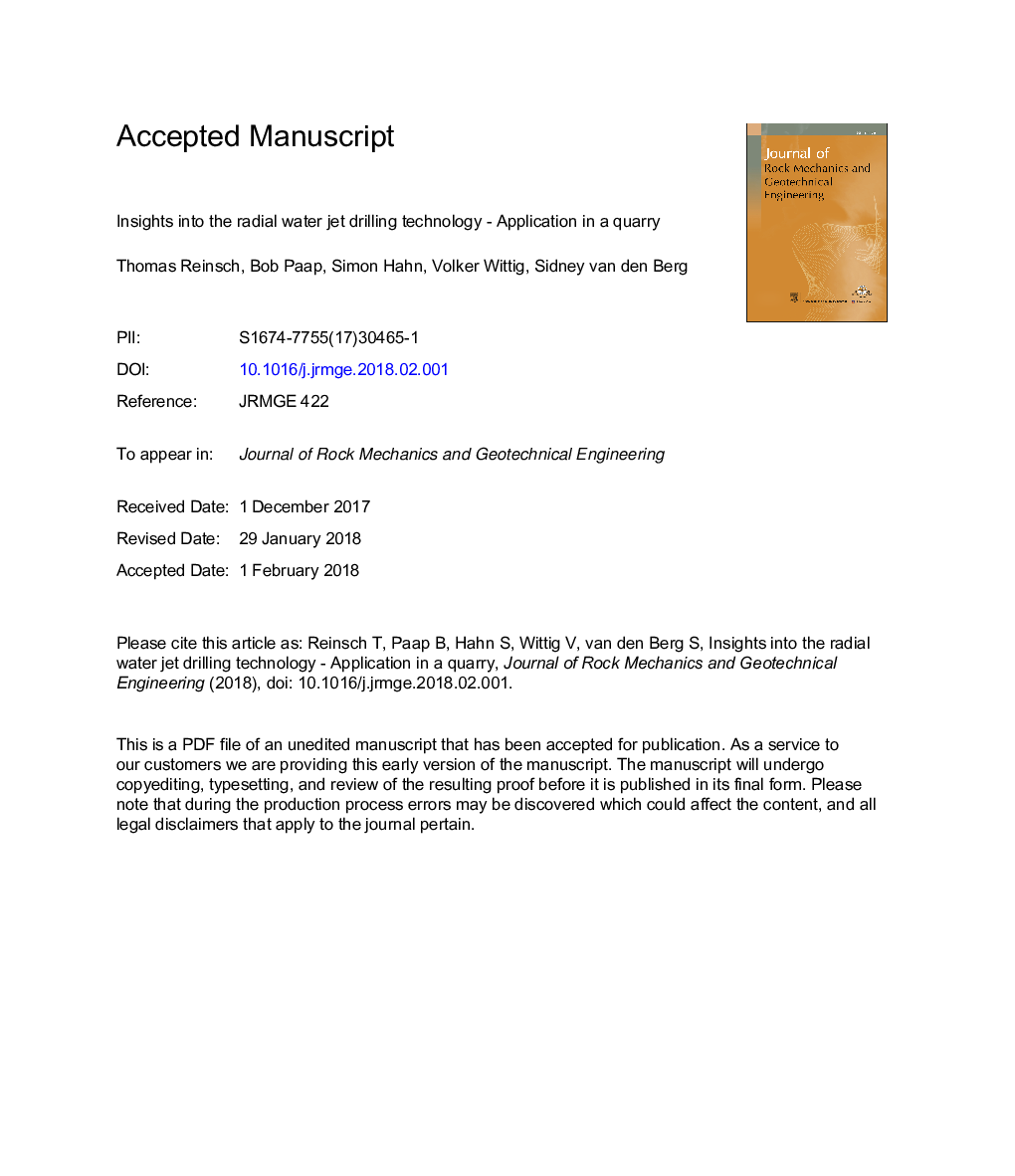| Article ID | Journal | Published Year | Pages | File Type |
|---|---|---|---|---|
| 6752292 | Journal of Rock Mechanics and Geotechnical Engineering | 2018 | 15 Pages |
Abstract
In this context, we applied the radial water jet drilling (RJD) technology to drill five horizontal holes into a quarry wall of the Gildehaus quarry close to Bad Bentheim, Germany. For testing the state-of-the-art jetting technology, a jetting experiment was performed to investigate the influence of geological heterogeneity on the jetting performance and the hole geometry, the influence of nozzle geometry and jetting pressure on the rate of penetration, and the possibility of localising the jetting nozzle utilizing acoustic activity. It is observed that the jetted holes can intersect fractures under varying angles, and the jetted holes do not follow a straight path when jetting at ambient surface condition. Cuttings from the jetting process retrieved from the holes can be used to estimate the reservoir rock permeability. Within the quarry, we did not observe a change in the rate of penetration due to jetting pressure variations. Acoustic monitoring was partially successful in estimating the nozzle location. Although the experiments were performed at ambient surface conditions, the results can give recommendations for a downhole application in deep wells.
Related Topics
Physical Sciences and Engineering
Earth and Planetary Sciences
Geotechnical Engineering and Engineering Geology
Authors
Thomas Reinsch, Bob Paap, Simon Hahn, Volker Wittig, Sidney van den Berg,
